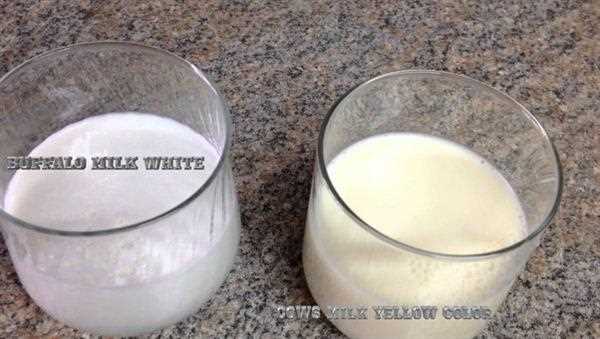Cow's milk and buffalo's milk are both popular sources of milk, but they have some key differences in terms of nutritional content, taste, and texture.
Nutritional content Cow's milk is generally lower in fat than buffalo's milk. One cup of whole cow's milk contains about 8 grams of fat, while the same amount of buffalo's milk contains about 16 grams of fat. Buffalo's milk also contains more protein and calcium than cow's milk. On the other hand, cow's milk has more vitamin B12 and folate than buffalo's milk.

Taste and texture Buffalo's milk is thicker, creamier, and sweeter than cow's milk. It has a distinct taste that some people describe as richer and more complex than cow's milk. Cow's milk, on the other hand, has a milder taste and a thinner consistency.
Digestibility Buffalo's milk is higher in fat and protein, which can make it more difficult to digest for some people. Cow's milk, with its lower fat and protein content, is generally considered more digestible. However, some people who are lactose intolerant may have difficulty digesting both types of milk.
Availability and cost Cow's milk is more widely available and less expensive than buffalo's milk. This is because cows are easier to raise and manage than buffaloes. Buffalo's milk is also more expensive due to its higher fat content and lower availability.
Culinary uses Buffalo's milk is often used in traditional Indian and Italian recipes, where its rich flavor and creamy texture can enhance the dish. Cow's milk is more versatile and can be used in a wide range of culinary applications, from baking to cooking to making dairy products like cheese and yogurt.
In conclusion, while both cow's milk and buffalo's milk have their own unique nutritional profiles, taste, and texture, cow's milk is generally lower in fat and more widely available, while buffalo's milk is creamier, sweeter, and more expensive. Both types of milk can be a nutritious addition to a balanced diet, and the choice ultimately depends on personal preference and dietary needs.